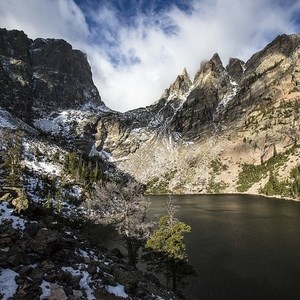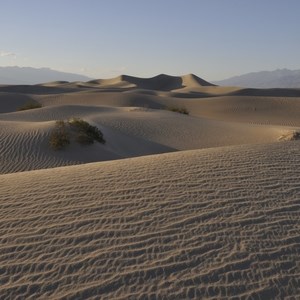From Peak to Sea...
When rain or snow become water on the ground (surface water) it will flow downhill over the land in distinct areas called watersheds. These watersheds, also known as catchments or drainage basins, collect surface runoff and deliver it to progressively larger streams and rivers.
NPS / Jacob W. Frank
Watersheds can vary in size from the very small (a few hundred square feet) to many thousands of square miles. Most large watersheds are made up of many small ones. Headwaters (where rivers start) can be found at the highest point in the watershed. Many times headwaters originate in mountainous regions and drain into lower regions.

NPS Photo/Jacob W. Frank
Watersheds and National Parks
A Continental Divide
Rocky Mountain National Park straddles the continental divide; water on the west side of this park flows into the upper Colorado River ultimately to the Pacific Ocean, water on the east side flows into the South Platte (through numerous smaller streams), ultimately into the Mississippi and on to the Gulf of America.

NPS Photo
A Watershed All to Itself
In Big Bend National Park, southwest Texas, water flows into the Rio Grande River through numerous creeks and washes and on to The Gulf of America. This park is situated entirely within the Rio Grande Watershed.

NPS Photo/ D. Pate
No Escape, Only Evaporation
Death Valley National Park is a special case. A large part of this park in the Badwater Basin watershed, which is called a closed basin. Water that flows to the lower portions of this watershed (the lowest elevation in the US) does not leave except by evaporation.Find Your Watershed
Which watershed does your favorite National Park belong to?
Interacting with the Environment
Watersheds supply surface runoff to streams and river systems. As water moves, it interacts with forests, farms, communities and other various landscapes. As water moves through these features it can pick up sediment, contaminants and other constituents.
As humans, our activities in the watershed have the potential to impact waters. Choosing land use activities with the health of an entire watershed in mind, will help to preserve and protect natural waters.
From the Field
Last updated: February 25, 2025
